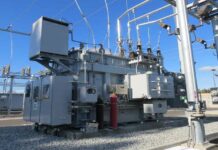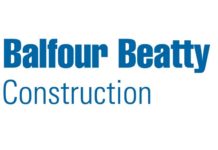Ground stability is a crucial consideration in construction, especially when working on a slope. Failing to take the time to assess and secure the ground before building on it can lead to landslides, sinkage and other problems, so firms must take this process seriously. Soil nails can help you avoid such incidents through several means.
Reinforcing the Soil
The biggest impact of soil nails is that they provide extra ground stability. Studies show that most slope failures come from destabilization in the lower portion of a hill. Nailing the ground offers additional support in these areas the same way rebar does for cement, preventing such hazards.
Because soil nailing typically involves some grouting or concrete, it also provides firmer ground than the area naturally exhibits. As a result, it can support more weight without collapsing.
Complementing Other Reinforcements
Soil anchors are useful as a complement to other protective measures. You can minimize landslide risks by draining the ground of excess moisture or digging to reduce the angle of a slope. Combining these efforts with nails provides the greatest protection possible.
Each stabilization method offers unique advantages. Consequently, when you use multiple, you cover the most ground, giving you the utmost confidence in your ability to finish projects without inciting a landslide or related issue.
Streamlining Projects
A secondary but still impactful benefit of soil nails is that they’re relatively easy to install. Anchoring does not take much time and is relatively inexpensive, making it an optimal way to balance safety and efficiency.
Project design inefficiencies are one of the most common causes of cost and schedule overruns in construction. Opting for a cost-effective safety solution like soil anchoring counteracts this trend to help you meet deadlines and stay within your budget without sacrificing workers’ well-being.
Soil Nailing Best Practices
Given these advantages, project managers cannot overlook soil nailing when dealing with slopes or unstable ground. However, fully capitalizing on the practice requires following several best practices.
Assess the Site First
The first step to effective soil nailing is to assess the slope to understand the conditions you’re dealing with. Different soil makeups, moisture content and slope angles can all impact the types of anchors you need and how you should implement them, so reviewing these considerations first is crucial.
Take samples of the ground and scan the area with 3D imaging technologies before construction begins. Once results come in, you can determine your nailing requirements accurately.
Use the Right Type of Nail
The number of nails you use, their size and their pattern all impact stability, but so does the specific type of anchor. Consequently, you must choose soil nails based on your earlier site-specific readings.
Launched nails achieve shear capacities of 20% of their axial pullout capacity, making them ideal for particularly loose ground. Open-hold nails, by contrast, are better for rocky terrain or more cohesive soils. Remember to consider the material, too, with respect to the area’s moisture content.
Employ Additional Protections
As effective as anchoring can be, it’s most impactful when you use it alongside other methods. When time and budget allow, you should also drain and address the angle of the slope to minimize risks from all sides.
Using all three methods will yield the greatest results. However, two is still better than one, so consider which additional protections most fit your needs at a given worksite.
Adapt Workflows Accordingly
Regardless of how resilient your anti-landslide defenses are, you should consider further reducing risks by adjusting your workflows. Minimizing heavy work at sharp angles and using lighter equipment can go a long way.
Today’s compact excavators weigh just 3-4 tons but can lift the same amount as conventional machines. Opting for these alternatives reduces the strain on your already reinforced soil to address hazards as much as possible.
Monitor the Slope
Teams must monitor the soil conditions and hill integrity throughout the project. Over time, wear and tear from work or unforeseen weather conditions may raise the need for additional fixes, such as implementing self-drilling nails to address active slippage.
The only way to respond effectively to unexpected situations is to keep a close eye on them. Assign a worker to check problematic ground areas every day before construction begins so teams can adapt if necessary.
Landslide Prevention Is Crucial
Landslides and sinkage can be devastating. Given the risks, construction crews must take every precaution to prevent such events. Learning why and how to use soil nails is the first step in creating a safer work environment.




























